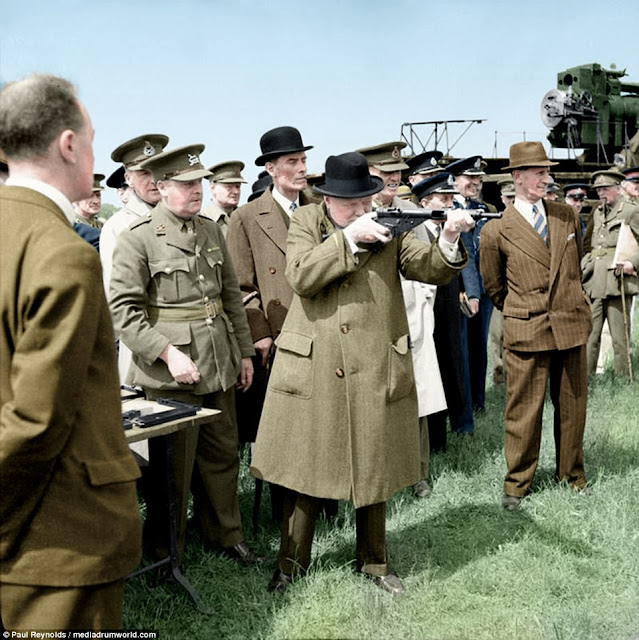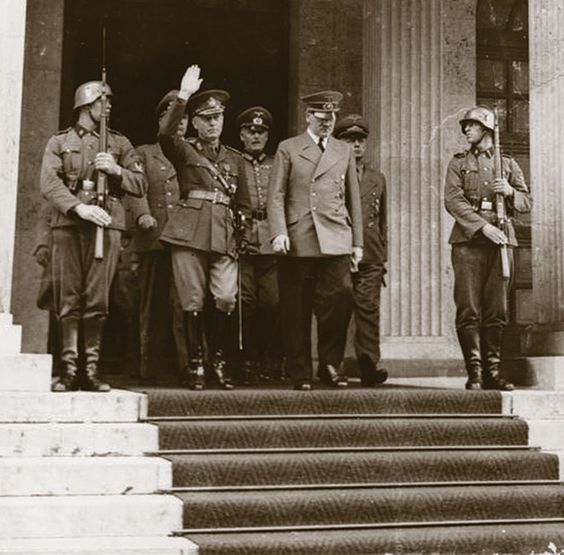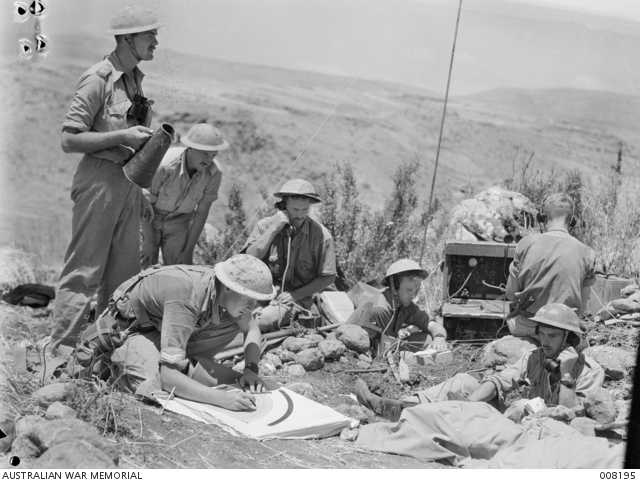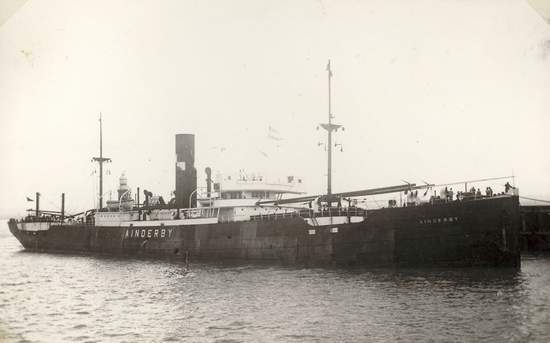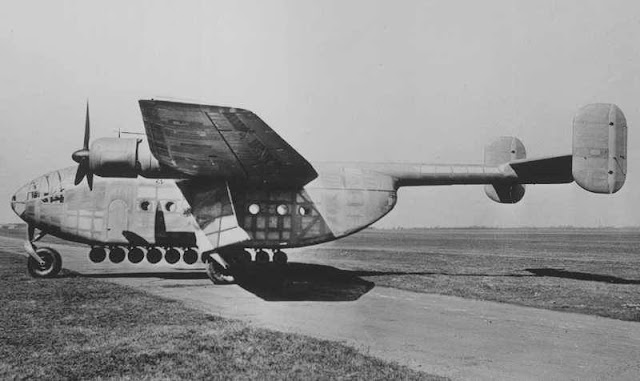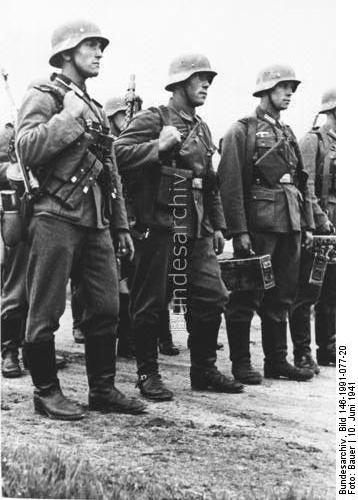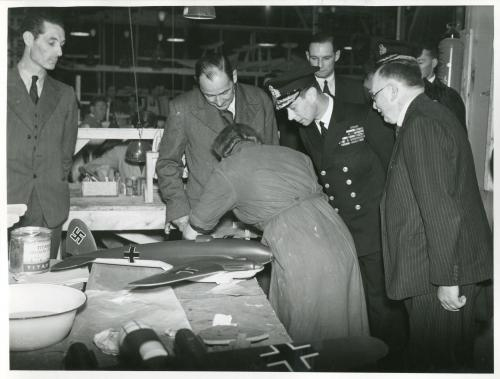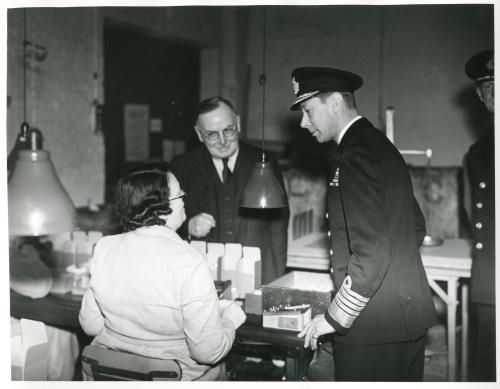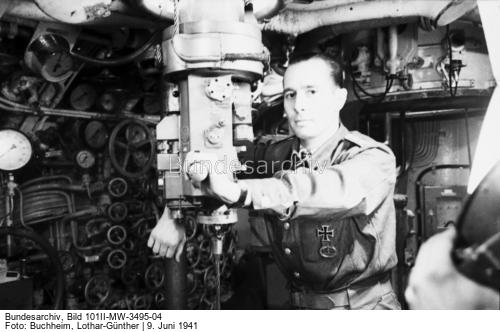Saturday 14 June 1941
 |
| Residents being deported from Latvia in cattle cars during the June Deportations, 14 June 1941. |
Syrian/Lebanon Campaign: Operation Exporter continues on 14 June 1941, but the Commonwealth forces run into fierce Vichy French opposition. The Australian 21st Brigade continues attacking Sidon on the coast road but still fails to completely secure the city. The French forces use Renault R35 tanks to good effect, and other Australian troops have to be called up from the southeast to outflank the defenders. The defending French pull out during the night after a hard-fought defense.
The 25th Brigade of the Australian 7th Division consolidates its hold on Jezzine, a key stop on the road to Beirut. To the east, the French force in Ktriese tries to block the British advance.
The Vichy French Navy sends two destroyers out of Beirut at 16:20 to shell the advancing Australians, but New Zealand cruiser HMNZS Leander and British destroyers send them back to port. British destroyers HMS Jervis and HMS Griffin bombard Sidon.
Fierce air battles develop offshore, where the Axis forces attack the Royal Navy ships off Tyre. Curtiss Tomahawks of RAAF No. 3 Squadron shoot down three bombers.
European Air Operations: The Luftwaffe sends eight He 111s of KGr 100 to attack the aircraft factory at Filton. The Luftwaffe loses one plane and the attack causes little damage.
RAF Fighter Command begins a month-long practice of daily fighter sweeps over the English Channel and Northern France.
RAF 11 Group attacks St. Omer airfields with 12 fighter squadrons escorting 12 Blenheim IVs of 2 Group. One Blenheim IV from RAF No.110 Sqn is lost.
During these attacks, Luftwaffe Ofw. Robert Menge of 3./JG 26 is shot down and killed near Marquise, France by Squadron Leader James E. Rankin of No. 92 Squadron RAF. Menge has 18 kills to his credit. RAF Bomber Command also sends 30 aircraft on anti-shipping missions.
During the night, RAF Bomber Command raids Cologne with 29 bombers. The Royal Canadian Air Force conducts its first mission when three No. 405 Squadron Wellingtons attack the Schwerte railway marshaling yards.
Air Chief Marshal Sir Philip Joubert becomes AOCinC (commander) of RAF Coastal Command.
Battle of the Atlantic: Having been torpedoed off Norway by an RAF Beaufighter, Kriegsmarine heavy cruiser Lutzow returns to Kiel under its own power. It will be out of commission for about a year.
U-751 (Kptlt. Gerhard Bigalk), on its first patrol out of Kiel, torpedoes, and sinks 5370-ton British freighter St. Lindsay. All 43 men on board perish, including a group of Navy officers traveling as passengers.
The Newfoundland Escort Force continues beefing up its support infrastructure with the arrival at St. John's of depot ship HMS Forth.
Convoy LC-1 departs from Londonderry for Halifax, Convoy OG-65 departs from Liverpool bound for Gibraltar, Convoy HG-65 departs from Gibraltar bound for Liverpool.
Canadian minesweeper HMCS Lachine is launched at Levis, Quebec.
Australian minesweeper HMAS Lithgow (Commander Alfred V. Knight) is commissioned.
United States destroyers USS Fitch and Forrest are launched and Doran and Earle are laid down.
U-333 is launched, U-303 and U-414 are laid down.
Battle of the Mediterranean: British troops move forward to jump-off points for Operation Battleaxe. This is an offensive on the Libyan border designed to relieve Tobruk. British Middle East Commander General Bernard Wavell anticipates that German General Erwin Rommel has his tanks tied down around Tobruk and that his armor will cut through the defending German infantry easily.
Due to careless wireless signals on the British side, Rommel learns eight hours before the British offensive begins that it is coming. He immediately orders reinforcements to the border. The main German force that will bear the brunt of the British offensive is the 15th Panzer Division. The German 5th Light Division also is available on the Tobruk perimeter.
Royal Navy submarine HMS Clyde torpedoes and sinks 331-ton Italian freighter Giovanini Bottigliere south of Sardinia.
In Operation Tracer, Royal Navy aircraft carriers HMS Ark Royal and Victorious successfully fly off 47 Hawker Hurricane fighters to Malta. The carriers and their accompanying escorts, Force H, then return to Gibraltar. All of the planes reach Malta.
Italian planes based on Rhodes bomb Suez Bay.
Luftwaffe ace Hans-Joachim Marseille is forced to crashland in Libya. He quickly returns to base, takes off in another fighter, but is shot down again. This fighter he also crashlands in Libya without injury and behind German lines.
Battle of the Pacific: Swedish 6079-ton freighter Ningpo hits a mine in Singapore Harbor. The explosion disables the freighter, which must be towed to Hong Kong for repairs.
Spy Stuff: The Japanese Vice-Consul in Hawaii, a Japanese intelligence officer posing as a diplomat, reports to Tokyo that a light cruiser has entered Pearl Harbor for repairs. The Japanese are keeping a very close eye on US Navy fleet movements across the Pacific.
US/Axis Relations: The sinking of US freighter Robin Moore off the African coast by U-69 (Kptlt. Jost Metzler) on 21 May 1941 results in sanctions against the Axis powers. It now is accepted even by isolationist United States Senator Gerald Nye (R-ND) that the Germans sank the freighter. Nye states:
The order applies to the nations themselves and individuals of those nations. No reason is given in the text of the order, but it clearly is directed at the Axis powers (including the Soviet Union and its satellites). Notable from its absence on the list is Japan, which is subject to other sanctions.
In addition, the US State Department tells Germany and Italy to close all consulates in the United States except for their embassies. The United States demands damages and reparations from Germany, but the Reich ignores this demand. Germany quickly responds by telling the United States to close its consulates in the Reich, and Germany and Italy both begin considering freezing United States assets in Europe.
German/Vichy French Relations: Given Vichy French unwillingness to ratify the Paris Protocols, they essentially become a nullity aside from the Luftwaffe use of airfields in the Levant - which at this point is a fairly useless concession given the fall of Iraq to the British.
Soviet/German Relations: Foreign Minister Vyacheslav Molotov tells German Ambassador Friedrich Werner von der Schulenburg that "only a fool would attack Russia." Schulenburg secretly basically agrees but has an inkling of what is to come.
German Military: Hitler holds meetings throughout the day with his generals at the Reich Chancellery. All of the generals and Field Marshals are given separate entrances and staggered times to attend the meeting in order to preserve secrecy.
Hitler, who already has absolved in advance Wehrmacht troops of all crimes they may commit during Operation Barbarossa, expands upon previous orders such as the Commissar Order of 6 June 1941. He reiterates that Soviet prisoners of war do not have to be treated according to the Articles of the Hague Convention and Geneva Convention. He reasons that the USSR is not covered by the treaties because it has not signed them. This means that they do not have to be fed or housed properly and so forth. In addition, as previously ordered, he emphasizes that Soviet Commissars are "not to be considered POWs" and are to be shot upon capture. It is certain that these orders are illegal and contrary both to treaties and the rules of warfare.
According to notes taken by a Luftwaffe general, at one point Hitler says:
There is an awkward moment when Reichsmarschall Hermann Goering, attempting to be positive (he has expressed his doubts about Operation Barbarossa in private), stands up and yells that the victory over the Soviet Union will rival those of Hitler's previous victories. Hitler, however, does not take the bait. Instead, he darkly warns that Operation Barbarossa will be the "toughest" fight yet because Germany "shall be fighting an ideological enemy and an ideological enemy of fanatical persistence at that."
Word of the Commissar Order, which authorizes immediate execution of Soviet political troops, filters down to the ranks. For instance, Theodore Eicke, commander of the SS Death's Head (Totenkopf) Division, tells his men of the order. Some commanders later claim, however, not to have informed their men of the order.
The Germans instruct their vessels in Soviet ports to leave.
British Military: Prime Minister Winston Churchill criticizes General Bernard Freyberg's conduct of operations on Crete in a letter to General Ismay. In particular, he is upset that Freyberg did not launch a counterattack at Maleme airfield while that was still possible.
Holocaust: The June Deportations begin in Estonia. The Soviet Union rounds up "suspect" individuals in Estonia. They are mostly political figures, clergymen, military officers, refugees and immigrants, and others the Soviets feel that they cannot control. About 10,000 people are rounded up and sent to Siberia in cattle cars, and whenever one individual is sent, his entire family is forced to go with him.
American Homefront: Jimmy Dorsey and his Orchestra have a No. 1 hit on the Billboard singles chart with "Maria Elena." It is a 1932 popular tune written originally in Spanish by Lorenzo Barcelata and released by Decca Records (3968). The flip side is "Green Eyes," which also will hit No. 1, making it a big double-sided hit recording.
June 1941
June 1, 1941: Farhud Pogrom
June 2, 1941: Massacres on Crete
June 3, 1941: Kandanos Massacre
June 4, 1941: Kaiser Wilhelm Passes Away
June 5, 1941: Death in Chungking
June 6, 1941: Hitler's Commissar Order
June 7, 1941: Commandos Strike at Pessac
June 8, 1941: British Invade Syria and Lebanon
June 9, 1941: Litani River Battle
June 10, 1941: British Take Assab
June 11, 1941: Hitler Thinking Beyond Russia
June 12, 1941: St. James Agreement
June 13, 1941: Lützow Damaged
June 14, 1941: Latvian June Deportations
June 15, 1941: Operation Battleaxe
June 16, 1941: The Old Lion
June 17, 1941: British Spanked in North Africa
June 18, 1941: Turkey Turns Its Back
June 19, 1941: Cheerios Introduced
June 20, 1941: Birth of US Army Air Force
June 21, 1941: Damascus Falls
June 22, 1941: Germany Invades Russia
June 23, 1941: A Soviet KV Tank Causes Havoc
June 24, 1941: Kaunas and Vilnius Fall
June 25, 1941: Finland Declares War
June 26, 1941: Bombing of Kassa
June 27, 1941: Encirclement At Minsk
June 28, 1941: Minsk Falls
June 29, 1941: Brest Fortress Falls
June 30, 1941: Mölders Becomes Top Ace
2020
The 25th Brigade of the Australian 7th Division consolidates its hold on Jezzine, a key stop on the road to Beirut. To the east, the French force in Ktriese tries to block the British advance.
The Vichy French Navy sends two destroyers out of Beirut at 16:20 to shell the advancing Australians, but New Zealand cruiser HMNZS Leander and British destroyers send them back to port. British destroyers HMS Jervis and HMS Griffin bombard Sidon.
Fierce air battles develop offshore, where the Axis forces attack the Royal Navy ships off Tyre. Curtiss Tomahawks of RAAF No. 3 Squadron shoot down three bombers.
 |
| Residents being deported from Latvia in cattle cars, 14 June 1941. |
RAF Fighter Command begins a month-long practice of daily fighter sweeps over the English Channel and Northern France.
RAF 11 Group attacks St. Omer airfields with 12 fighter squadrons escorting 12 Blenheim IVs of 2 Group. One Blenheim IV from RAF No.110 Sqn is lost.
During these attacks, Luftwaffe Ofw. Robert Menge of 3./JG 26 is shot down and killed near Marquise, France by Squadron Leader James E. Rankin of No. 92 Squadron RAF. Menge has 18 kills to his credit. RAF Bomber Command also sends 30 aircraft on anti-shipping missions.
During the night, RAF Bomber Command raids Cologne with 29 bombers. The Royal Canadian Air Force conducts its first mission when three No. 405 Squadron Wellingtons attack the Schwerte railway marshaling yards.
Air Chief Marshal Sir Philip Joubert becomes AOCinC (commander) of RAF Coastal Command.
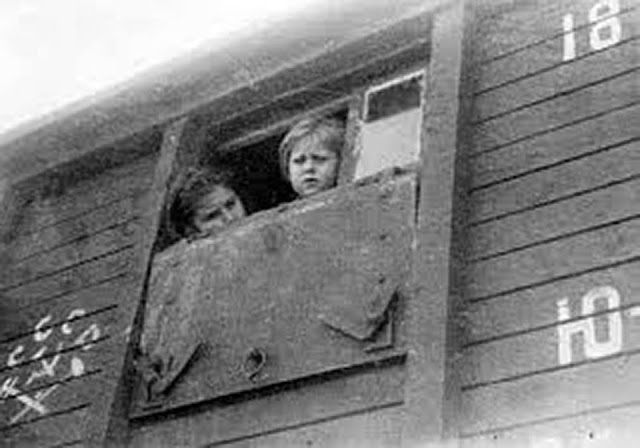 |
| Residents being deported from Latvia in cattle cars, 14 June 1941. |
U-751 (Kptlt. Gerhard Bigalk), on its first patrol out of Kiel, torpedoes, and sinks 5370-ton British freighter St. Lindsay. All 43 men on board perish, including a group of Navy officers traveling as passengers.
The Newfoundland Escort Force continues beefing up its support infrastructure with the arrival at St. John's of depot ship HMS Forth.
Convoy LC-1 departs from Londonderry for Halifax, Convoy OG-65 departs from Liverpool bound for Gibraltar, Convoy HG-65 departs from Gibraltar bound for Liverpool.
Canadian minesweeper HMCS Lachine is launched at Levis, Quebec.
Australian minesweeper HMAS Lithgow (Commander Alfred V. Knight) is commissioned.
United States destroyers USS Fitch and Forrest are launched and Doran and Earle are laid down.
U-333 is launched, U-303 and U-414 are laid down.
 |
| Residents being deported from Latvia in cattle cars, 14 June 1941. |
Due to careless wireless signals on the British side, Rommel learns eight hours before the British offensive begins that it is coming. He immediately orders reinforcements to the border. The main German force that will bear the brunt of the British offensive is the 15th Panzer Division. The German 5th Light Division also is available on the Tobruk perimeter.
Royal Navy submarine HMS Clyde torpedoes and sinks 331-ton Italian freighter Giovanini Bottigliere south of Sardinia.
In Operation Tracer, Royal Navy aircraft carriers HMS Ark Royal and Victorious successfully fly off 47 Hawker Hurricane fighters to Malta. The carriers and their accompanying escorts, Force H, then return to Gibraltar. All of the planes reach Malta.
Italian planes based on Rhodes bomb Suez Bay.
Luftwaffe ace Hans-Joachim Marseille is forced to crashland in Libya. He quickly returns to base, takes off in another fighter, but is shot down again. This fighter he also crashlands in Libya without injury and behind German lines.
Battle of the Pacific: Swedish 6079-ton freighter Ningpo hits a mine in Singapore Harbor. The explosion disables the freighter, which must be towed to Hong Kong for repairs.
 |
| HMAS Hobart preparest to tow freighter HMS Glenearn in Suez Bay, 14 June 1941. |
US/Axis Relations: The sinking of US freighter Robin Moore off the African coast by U-69 (Kptlt. Jost Metzler) on 21 May 1941 results in sanctions against the Axis powers. It now is accepted even by isolationist United States Senator Gerald Nye (R-ND) that the Germans sank the freighter. Nye states:
The evidence that the Robin Moor was sunk by a German submarine is too complete to permit my declaration of yesterday noon, to the effect that the boat might have been sunk by Britain, to stand."President Roosevelt signs Executive Order 8785, entitled "Freezing the Assets of Certain European Countries." By this order, the United States immediately freezes assets of Andorra, Austria, Czechoslovakia, Danzig, Finland, Germany, Italy, Liechtenstein, Poland, Portugal, San Marino, Spain, Sweden, Switzerland, and Union of Soviet Socialist Republics, Norway, Denmark, The Netherlands, France, Monaco, Latvia, Estonia, Lithuania, Romania, Bulgaria, Hungary, Yugoslavia (which technically no longer exists), Greece, and Albania.
The order applies to the nations themselves and individuals of those nations. No reason is given in the text of the order, but it clearly is directed at the Axis powers (including the Soviet Union and its satellites). Notable from its absence on the list is Japan, which is subject to other sanctions.
In addition, the US State Department tells Germany and Italy to close all consulates in the United States except for their embassies. The United States demands damages and reparations from Germany, but the Reich ignores this demand. Germany quickly responds by telling the United States to close its consulates in the Reich, and Germany and Italy both begin considering freezing United States assets in Europe.
German/Vichy French Relations: Given Vichy French unwillingness to ratify the Paris Protocols, they essentially become a nullity aside from the Luftwaffe use of airfields in the Levant - which at this point is a fairly useless concession given the fall of Iraq to the British.
 |
| Troopship MV Georgic on fire after an air attack in Suez Bay, 14 June 1941. |
Hitler, who already has absolved in advance Wehrmacht troops of all crimes they may commit during Operation Barbarossa, expands upon previous orders such as the Commissar Order of 6 June 1941. He reiterates that Soviet prisoners of war do not have to be treated according to the Articles of the Hague Convention and Geneva Convention. He reasons that the USSR is not covered by the treaties because it has not signed them. This means that they do not have to be fed or housed properly and so forth. In addition, as previously ordered, he emphasizes that Soviet Commissars are "not to be considered POWs" and are to be shot upon capture. It is certain that these orders are illegal and contrary both to treaties and the rules of warfare.
According to notes taken by a Luftwaffe general, at one point Hitler says:
The main enemy is still Britain. Britain will fight on as long as the fight has any purpose; this is typical of the British, as we have seen from their individual soldier’s conduct in Flanders, and it was demonstrated again by Dunkirk, by Greece, and by Crete. But Britain’s fight only makes sense as long as they can hope that American aid will take effect and that they may find support on the continent. This explains why they have high hopes that the Russians will intervene and tie down the Germans, wearing down our war economy while the balance of power is tilted by American aid. At present this is very meager; it will not become effective until the summer of 1942, assuming they have enough shipping tonnage to bring it over here; and the shipping losses are increasing.
The proof of [Britain’s] advances to Russia is the complete uniformity in their press treatment of Cripps’s journey.(1) Russia’s attitude is perpetually obscure; she exploited every moment of political or military preoccupation elsewhere to raise immediate political demands. We can see this happening in Russia’s intervention in the Polish campaign, and again against the Baltic states and Finland, and now in the Balkans (Bessarabia, and the treaty of friendship with Yugoslavia).
Our attempt to “clarify the position” met with the following objections from Molotov. First question, What does our guarantee to Romania mean and would we object to a Russian military mission? The second question concerning the Dardanelles, and the third about Finland. In other words continual efforts to push in somewhere. Since these efforts coincided chronologically with various temporary weaknesses in the German position, we would have to expect them to use every chance they can in the future to act against Germany’s interests. The Russian armed forces are strong enough to prevent us from demobilizing soldiers and feeding them into the arms and consumer-goods industries so long as this latent Russian threat persists. Even if we made peace with Britain this would still be so. We want this conflict to come early, however ; indeed it is absolutely vital if we are not to forfeit the favorable conditions that prevail. The bulk of the Russian forces are standing on the frontier, so we have a good chance of defeating them right there.Hitler admits during his typical monologue that Soviet troops outnumber the Wehrmacht. He reasons that this problem is surmountable because of the higher quality of German troops.
There is an awkward moment when Reichsmarschall Hermann Goering, attempting to be positive (he has expressed his doubts about Operation Barbarossa in private), stands up and yells that the victory over the Soviet Union will rival those of Hitler's previous victories. Hitler, however, does not take the bait. Instead, he darkly warns that Operation Barbarossa will be the "toughest" fight yet because Germany "shall be fighting an ideological enemy and an ideological enemy of fanatical persistence at that."
Word of the Commissar Order, which authorizes immediate execution of Soviet political troops, filters down to the ranks. For instance, Theodore Eicke, commander of the SS Death's Head (Totenkopf) Division, tells his men of the order. Some commanders later claim, however, not to have informed their men of the order.
The Germans instruct their vessels in Soviet ports to leave.
 |
| Martin Baltimore Mk. I or II. on June 14, 1941. (U.S. Air Force photo) |
Holocaust: The June Deportations begin in Estonia. The Soviet Union rounds up "suspect" individuals in Estonia. They are mostly political figures, clergymen, military officers, refugees and immigrants, and others the Soviets feel that they cannot control. About 10,000 people are rounded up and sent to Siberia in cattle cars, and whenever one individual is sent, his entire family is forced to go with him.
American Homefront: Jimmy Dorsey and his Orchestra have a No. 1 hit on the Billboard singles chart with "Maria Elena." It is a 1932 popular tune written originally in Spanish by Lorenzo Barcelata and released by Decca Records (3968). The flip side is "Green Eyes," which also will hit No. 1, making it a big double-sided hit recording.
 |
| This grave marker in Libya reads, “Here rests an unknown English lieutenant, fallen during air combat on June 14th, 1941" (photograph was taken by George Rodger, Colorized by Laiz Kuczynski). |
June 1941
June 1, 1941: Farhud Pogrom
June 2, 1941: Massacres on Crete
June 3, 1941: Kandanos Massacre
June 4, 1941: Kaiser Wilhelm Passes Away
June 5, 1941: Death in Chungking
June 6, 1941: Hitler's Commissar Order
June 7, 1941: Commandos Strike at Pessac
June 8, 1941: British Invade Syria and Lebanon
June 9, 1941: Litani River Battle
June 10, 1941: British Take Assab
June 11, 1941: Hitler Thinking Beyond Russia
June 12, 1941: St. James Agreement
June 13, 1941: Lützow Damaged
June 14, 1941: Latvian June Deportations
June 15, 1941: Operation Battleaxe
June 16, 1941: The Old Lion
June 17, 1941: British Spanked in North Africa
June 18, 1941: Turkey Turns Its Back
June 19, 1941: Cheerios Introduced
June 20, 1941: Birth of US Army Air Force
June 21, 1941: Damascus Falls
June 22, 1941: Germany Invades Russia
June 23, 1941: A Soviet KV Tank Causes Havoc
June 24, 1941: Kaunas and Vilnius Fall
June 25, 1941: Finland Declares War
June 26, 1941: Bombing of Kassa
June 27, 1941: Encirclement At Minsk
June 28, 1941: Minsk Falls
June 29, 1941: Brest Fortress Falls
June 30, 1941: Mölders Becomes Top Ace
2020
